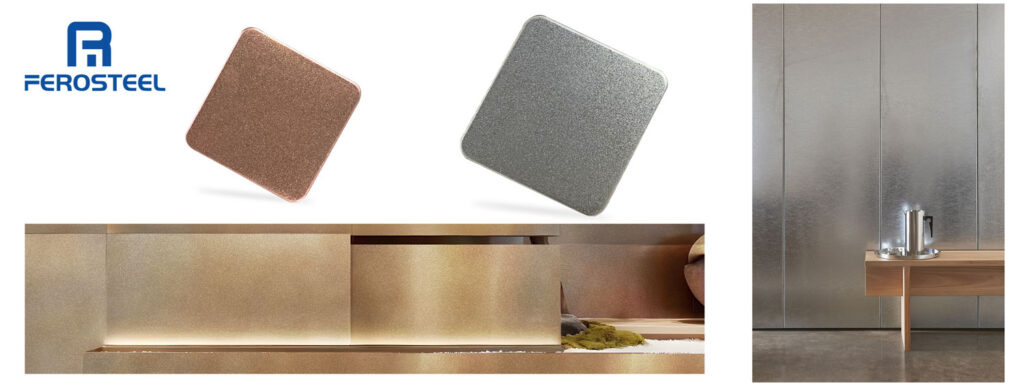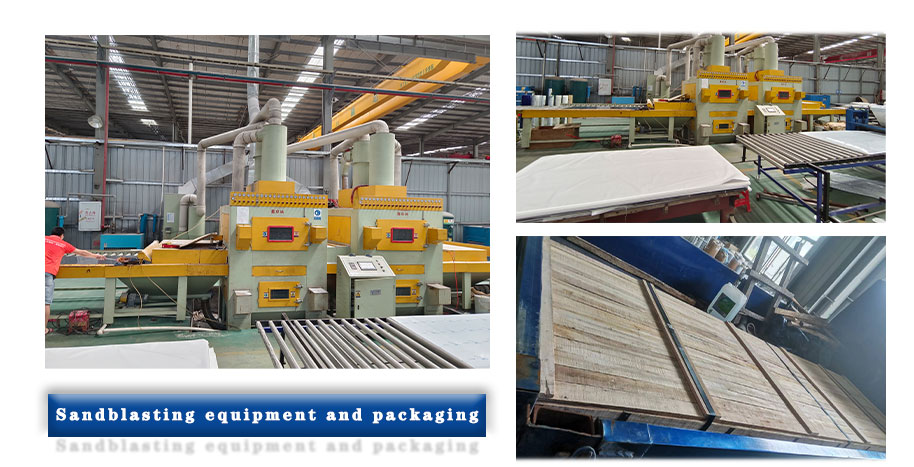
In the realm of art and design, materials play a crucial role in shaping creativity and expression. One such material that has been gaining attention for its unique aesthetic qualities is sandblasted stainless steel. This article delves into the world of surface artistry, exploring the diverse ways in which artists and designers are harnessing the potential of sandblasted stainless steel to create captivating works of art and functional design pieces.
Introduction
Sandblasted stainless steel has emerged as a popular choice among artists and designers seeking to imbue their creations with texture, depth, and visual interest. By subjecting stainless steel surfaces to the abrasive force of sandblasting, artisans can achieve a range of striking effects, from subtle patterns to bold textures. This technique has found applications in various artistic disciplines, including sculpture, architecture, and furniture design, giving rise to a new wave of creativity and innovation.
The Technique of Sandblasting
At the heart of the sandblasting process lies precision and control. Artists and craftsmen carefully manipulate the flow of abrasive material—typically sand or grit—against the surface of stainless steel, gradually etching away layers to reveal intricate patterns and textures. The result is a surface that is both visually captivating and tactilely engaging, inviting viewers to explore its nuances and details.
Exploring Artistic Possibilities
In the realm of sculpture, sandblasted finsih offers artists a versatile medium for bringing their visions to life. Sculptors like [Artist Name] have pushed the boundaries of traditional sculptural forms, experimenting with abstract shapes and textures to create dynamic and expressive works. Whether used as standalone pieces or integrated into larger installations, these sculptures command attention and spark conversation, drawing viewers into a dialogue with the material and its inherent beauty.
Architects, too, have embraced the possibilities of sandblasted stainless steel in their designs. From sleek urban facades to avant-garde interiors, sandblasted stainless steel adds a touch of sophistication and modernity to architectural spaces. Its durability and corrosion resistance make it particularly well-suited for outdoor applications, where it can withstand the elements while retaining its luster and charm.
In the realm of furniture and functional art, designers are harnessing the versatility of sandblasted stainless steel to create pieces that are as aesthetically pleasing as they are practical. Tables, chairs, and lighting fixtures take on new life when crafted from sandblasted stainless steel, their surfaces shimmering with light and shadow. Whether used in residential interiors or commercial settings, these pieces make a bold statement, elevating the ordinary to the extraordinary.

Case Studies
One such artist who has mastered the art of sandblasted stainless steel . Known for his innovative approach to sculpture, seamlessly blends traditional techniques with contemporary aesthetics, producing works that are at once timeless and cutting-edge. His series of sandblasted stainless steel sculptures, [Sculpture Series Name], exemplifies his mastery of the medium, with each piece showcasing intricate patterns and textures that invite closer inspection.
In the realm of architecture, the [Architectural Firm Name] has garnered acclaim for its use of sandblasted stainless steel in building facades. By incorporating sandblasted stainless steel panels into their designs, the firm creates structures that are both visually striking and environmentally sustainable. The interplay of light and shadow on the textured surfaces of these buildings adds depth and dimension to the urban landscape, transforming ordinary spaces into works of art.
Advantages and Challenges
The advantages of sandblasted finsih are manifold. Its durability and resistance to corrosion make it an ideal choice for both indoor and outdoor applications, ensuring that artworks and design pieces will withstand the test of time. Furthermore, the versatility of sandblasted stainless steel allows artists and designers to explore a wide range of creative possibilities, from subtle etchings to bold sculptural forms.
However, there are challenges associated with working with sandblasted finsih. The cost of materials and equipment can be prohibitive for some artists and designers, limiting access to this medium. Additionally, the abrasive nature of sandblasting poses potential health and safety risks, requiring careful adherence to safety protocols and proper ventilation in the studio environment.

